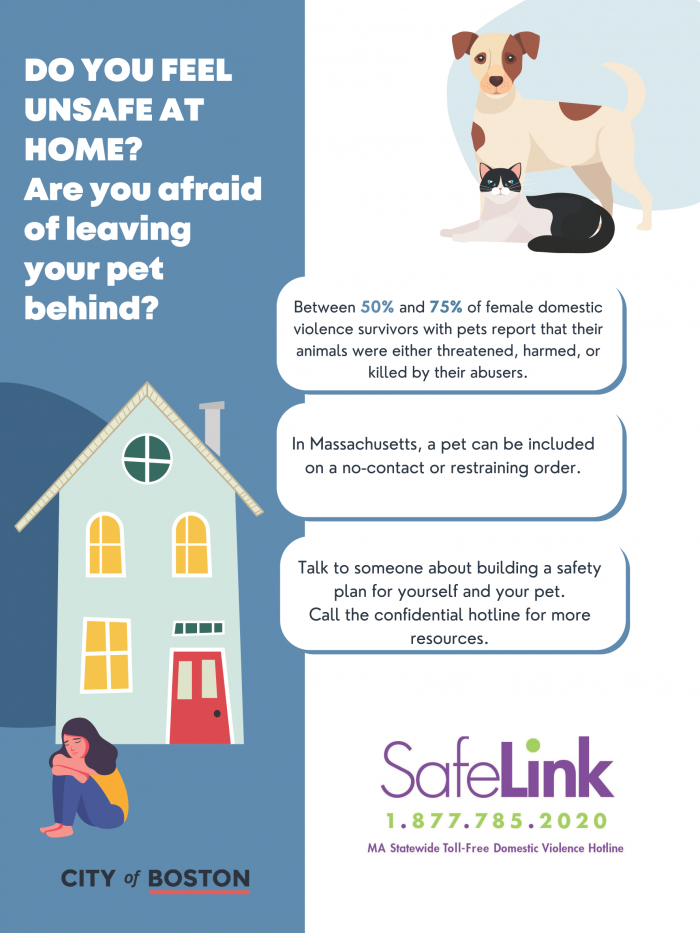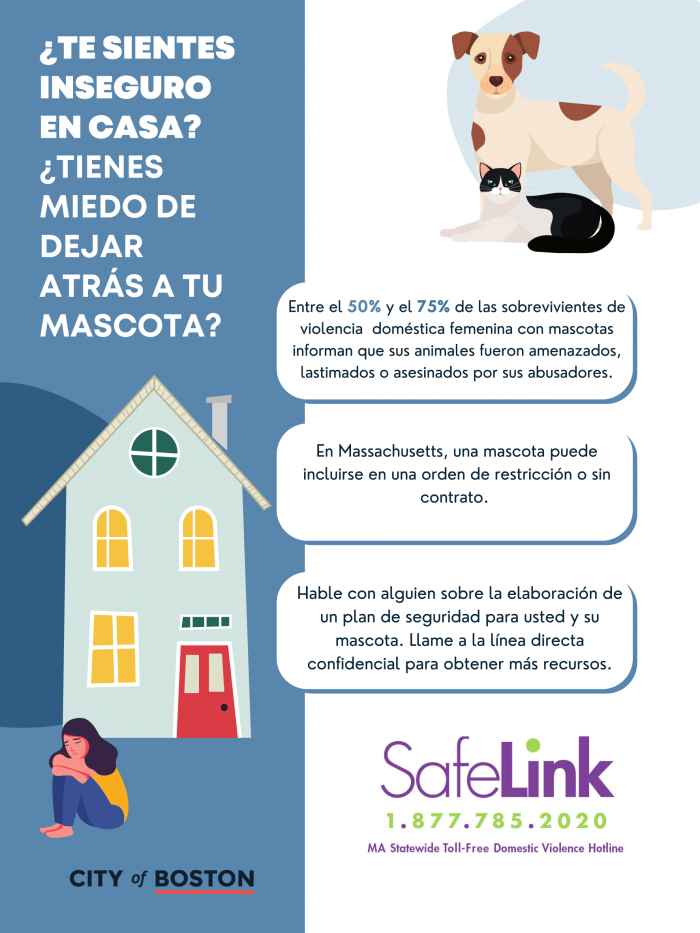Katie’s Pet Project
ANIMAL ABUSE AND DOMESTIC VIOLENCE
“When he was beating me, my dog would always go crazy, bark and try to intervene. So, my abuser would tie him up, wrap a cord around his muzzle to keep him from barking and beat him too. I was more terrified of the cruel ways he hurt my dog than of my own abuse, so he used that to control me.”
For over 20 years, researchers have recognized the link between animal abuse and domestic violence. When abusers use violence in the home to control and threaten their partners and children, pets are often also victims of harm. A national 2017 study reported that 89% of victims who had pets during an abusive relationship stated that their animals were threatened, harmed or killed by their abusive partner. And a landmark study by the Massachusetts Society for the Prevention of Cruelty to Animals and Northeastern University in 1997 showed that animal abusers are five times as likely to also abuse people.
The bond between a victim of domestic violence and their pets can be very strong. Often the pet is the victim’s only source of comfort and love. Not only do survivors worry about their own and their children’s safety, but they are also afraid for their pets and will delay leaving an abuser out of concern for the safety of a beloved pet.
This summer, Casa Myrna Children’s Services Advocate Katie Marcincuk partnered with the Boston Mayor’s Office for Women’s Advancement to take action. As a graduate student in the Boston College School of Social Work and a fellow in the Rappaport Summer Policy Fellowship through the Harvard Kennedy School, Katie worked with the Mayor’s Office to bring attention to much-needed policy changes and public awareness of the problem of animal cruelty in domestic violence cases.
Her first step to raise public awareness was to design a poster (pictured below in English & Spanish) to be distributed to veterinarians’ offices, animal rescue organizations, the state’s Department of Children and Families, and law enforcement organizations to encourage the public to speak up when they encounter abuse. But she wanted to do more. “If you don’t know what to do, you won’t act, and silence is violence,” stated Katie.
She created a training for vets and stakeholders to inform them about the many ways that they can recognize red flags and react to suspicions of interpersonal violence within their practice. Despite the fact that veterinarians are mandated reporters of animal abuse, most have no training on how to recognize abusive dynamics that may come into play with a family and their pet. On September 8th, Katie proposed her presentation to the Advisory Committee of the Massachusetts Veterinary Medicine Association about this problem and how they can be a part of the solution. Ultimately Katie hopes that her work will become an accredited training required of all veterinary students and a change in attitudes about what we owe to our pets.
For all families, and particularly those suffering from abuse, our pets are members of our family, living beings and a great source of comfort. Katie and all of us at Casa Myrna believe the existing gap in service experienced by survivors with pets can be addressed together to ensure the safety of all members of the family.
If you’d like to learn more, please email dev@casamyrna.org.
Additional resources:
Haven (Human/Animal Violence Education Network)
Understanding the Link Between Violence to Animals and People
Facts and Myths About Domestic Violence and Animal Abuse
Domestic Violence and The Link



